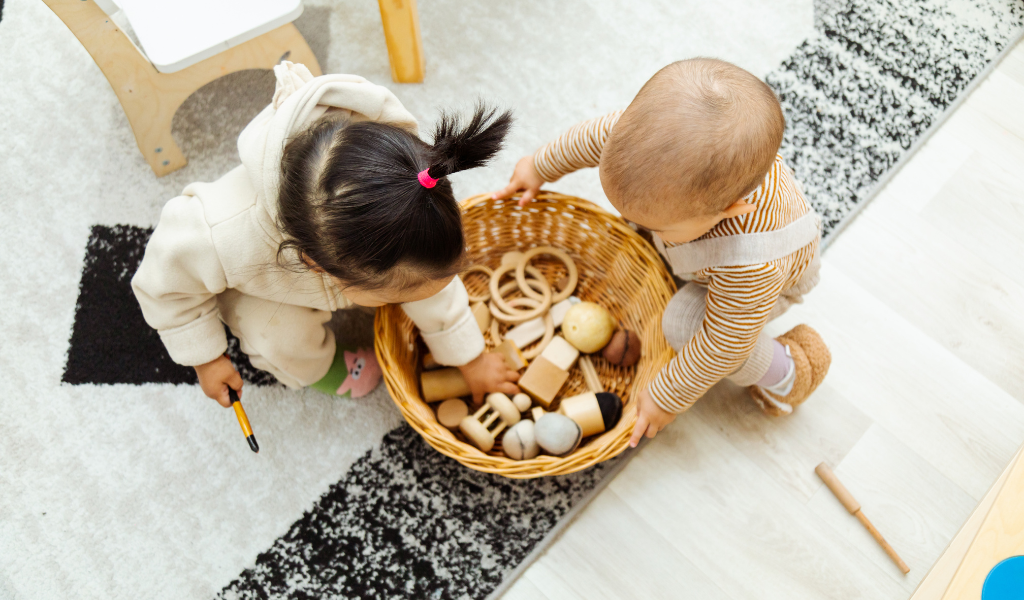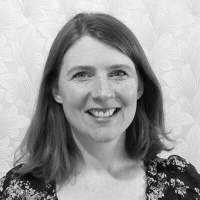Within early childhood education we often refer to children engaging in schematic play. When reading theory or attending training on this theme, educators may use different terminology. In this blog Tamsin will explain the difference between schemes and schemas.
Piaget, the Swiss psychologist, used the term ‘scheme’ when describing children’s repetitive actions, such as containing or positioning resources and schema when describing the figurative thought behind the action (Piaget, 1969). This term was somewhat lost in translation and through the work of pioneers such as Chris Athey the term ‘schema’ was used to describe both these same actions and the thinking. Many other scholars and authors, including myself, have continued to use the same word ‘schema’ when describing both repetitive play patterns and cognitive frameworks which help us organise our thinking (Grimmer, 2017). As you can imagine this can get rather confusing at times!

Therefore, in recent years, SchemaPlay™ initiated by John Siraj-Blatchford and Lynnette Brock, is conducting further research into schematic play and distinguishes between ‘scheme’ and ‘schema’, returning to the original translations and meaning (Brock & Siraj-Blatchford, 2019). Lynnette Brock explained to me, “SchemaPlay ™ refers to a ‘scheme’ when describing a child’s behaviour or action. For example, if we see a child moving objects around the nursery, the actions/their behaviour of moving things from one place to another are typically described as ‘transporting’. This action of ‘transporting’ is, as Piaget (1969) defined, an ‘operational scheme’. The figurative perceptions and knowledge that a child may acquire during the activity and later recall, are what Piaget (1969) referred to as ‘figurative schemas’. For example, a child who transports sand in a bucket from one place to another, perceives during their play that a bucket is container and that it is useful for carrying things. The child may also develop ‘figurative’ knowledge of capacity and volume.”

In my view it doesn’t matter which terms we choose to use in our work with the children, because the important thing is responding to their play and further supporting them through interactions, resources and the learning environment. However, if someone wanted to research schematic play, Chris Athey believes further study into schemes and schemas would be helpful, “If the differences between scheme and schema reflect fundamental differences between operative and figurative thinking, they are worthy of further study” (Athey, 2007: 114).

Whether we use the terminology ‘scheme’ or ‘schema’ one thing is certain – we must sensitively respond to children as they engage in freely chosen play.
You can learn more about SchemaPlay with Lynette Brock at the upcoming Kinderly webinar on 21st June. Click HERE to book.

Tamsin Grimmer is an experienced consultant and trainer, the early years director of Linden Learning and a part-time lecturer at Bath Spa University and Norland College. She is the author of several books in early years practice including: Developing a Loving Pedagogy, Supporting Behaviour and Emotions in the Early Years and Nurturing Self-regulation in Early Childhood.
Tamsin is also our content manager here at Kinderly!
Athey, C. (2007) Extending thought in young children: A parent – teacher partnership (2nd ed.). London: Sage.
Brock, L. and Siraj-Blatchford, J. (2019) SchemaPlay Activity Ideas: Supporting learning outcomes in free-flow play. SchemaPlay Publications
Grimmer, T. (2017) Observing and Developing Schematic Behaviour in Young Children. London: Jessica Kingsley
Piaget, J. (1969) The Mechanisms of Perception. New York: Basic Books